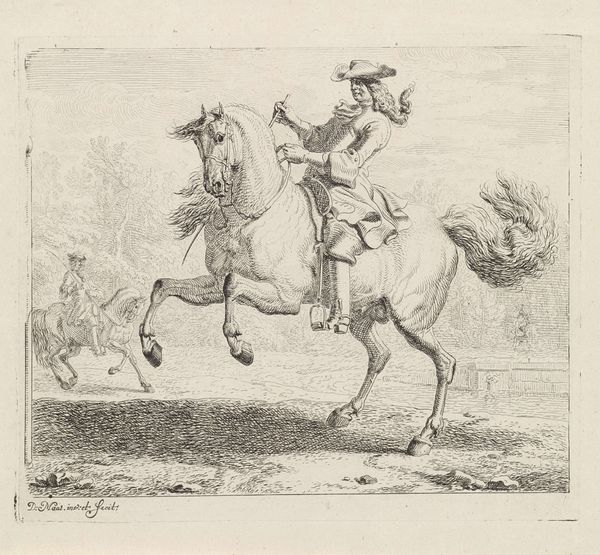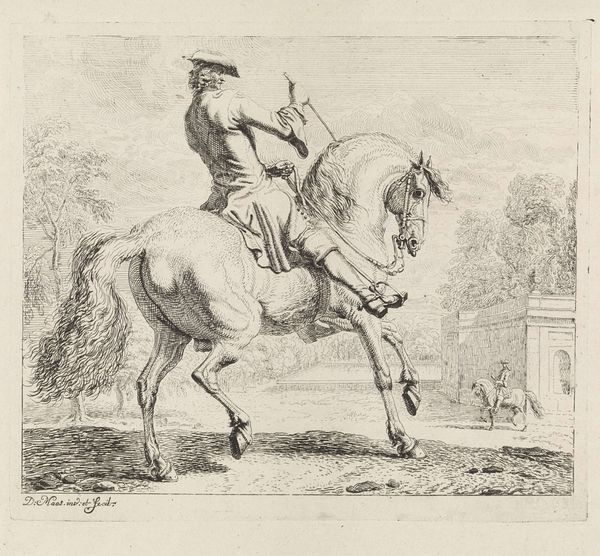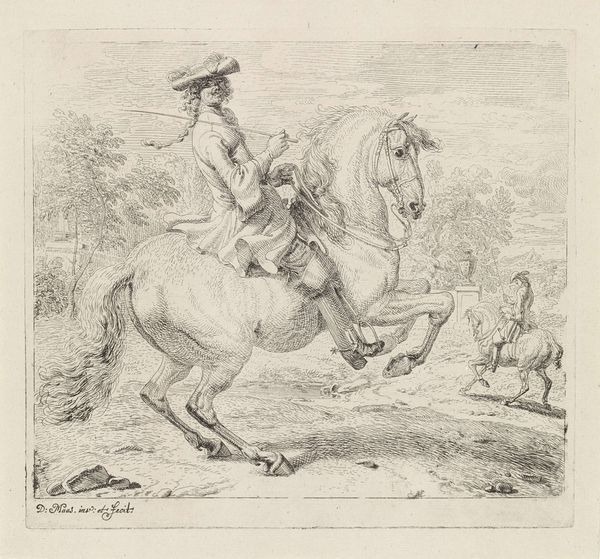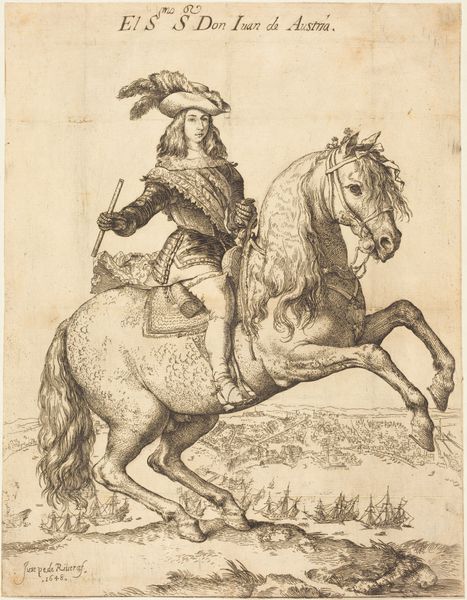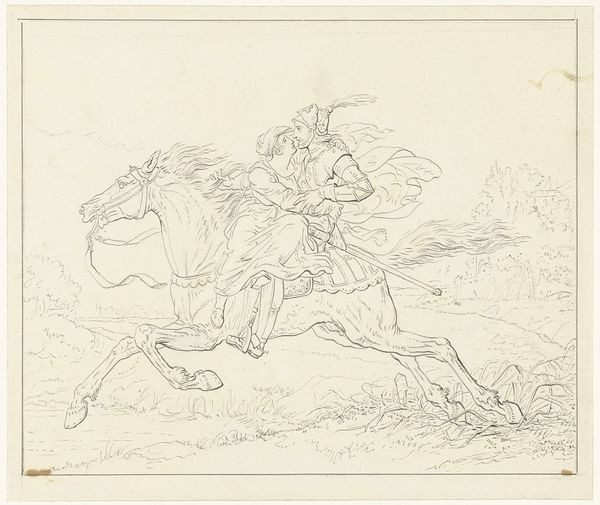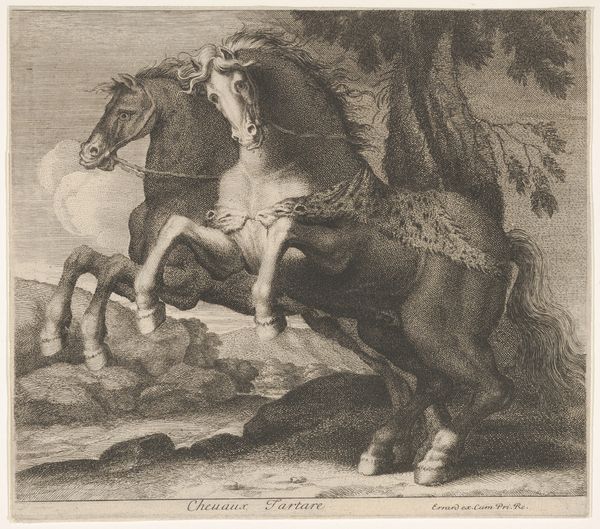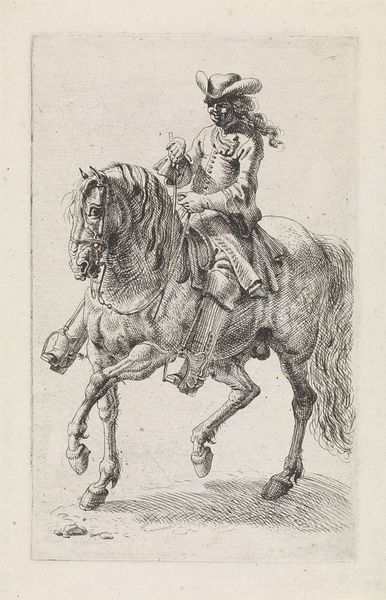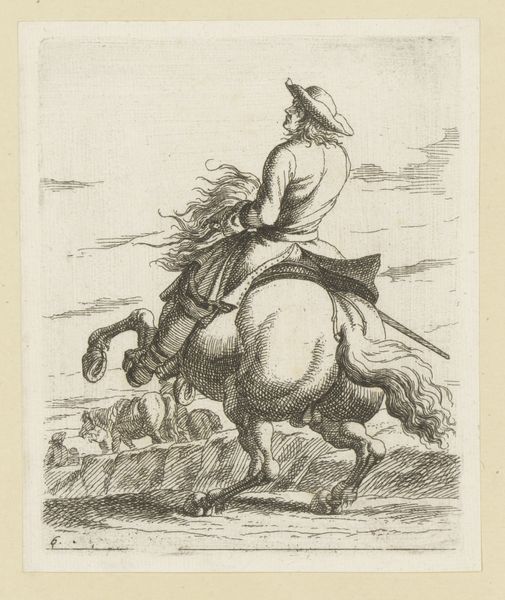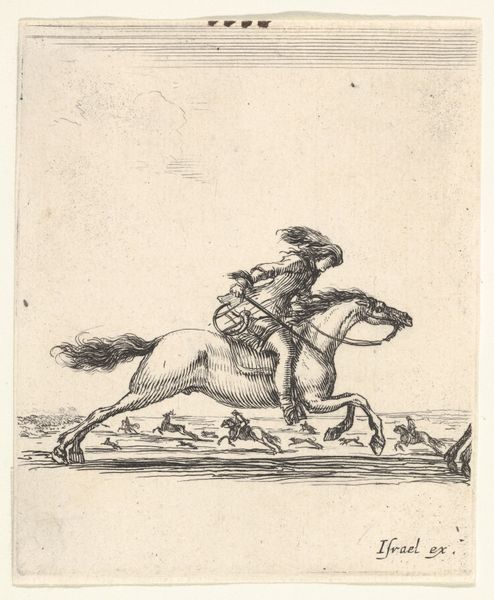
print, etching
#
baroque
# print
#
etching
#
landscape
#
genre-painting
#
history-painting
Dimensions: height 204 mm, width 235 mm
Copyright: Rijks Museum: Open Domain
Curator: Here we have “Ruiter met springend paard,” or “Horseman with a jumping horse,” an etching by Dirk Maas, created sometime between 1669 and 1717. Editor: The texture is astounding! You can almost feel the horse's frantic energy, despite it being a small, quiet scene. There's a drama here that's difficult to ignore. Curator: Indeed. Maas, as a genre painter, frequently turned to military subjects. It reflects the baroque interest in dramatic action, albeit scaled down. Consider the social context: equestrian displays were status symbols for the elite. Editor: It also reminds me that so much art from this period romanticizes military endeavors, often erasing the grim realities and societal inequalities upon which they were built. Note how detached the rider is! Curator: Perhaps, but the emphasis here seems less on glorifying conflict and more on showcasing horsemanship. The architectural setting could allude to classical equestrian arenas, linking present displays of mastery to ancient traditions. It shows how social performances can both emulate the past and uphold existing hierarchies. Editor: And how! It would be nice if such attention was put to building social movements. I wonder, though, how would audiences view Maas's portrayal of masculinity now, seeing it could either conform to the aggressive norms of the time, or attempt to playfully destabilize that status with the almost silly bounce the subject strikes? Curator: The beauty of art, especially with such a wide creation date, is its evolving cultural relevance. Now displayed at the Rijksmuseum, Maas’s work, though historical, continues to be relevant in new, sometimes contradictory contexts. Editor: Right! Recognizing those shifting dynamics—how we grapple with power, representation, and history—helps us look at these images not just as artifacts, but as tools for critical thinking. It is indeed important that we keep posing these questions and sharing the insights this artwork sparks.
Comments
No comments
Be the first to comment and join the conversation on the ultimate creative platform.
